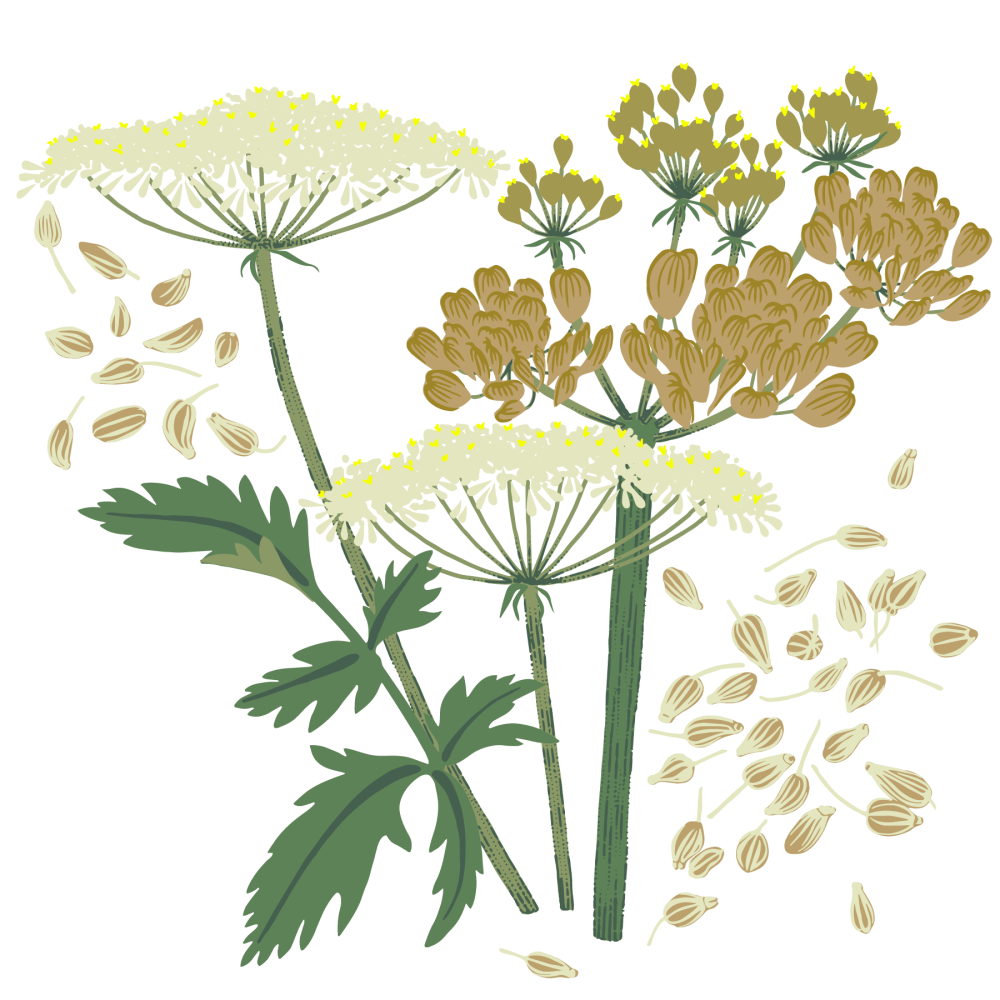Anise

Latin name: Pimpinella anisum
Other names: aniseed
Uses: spice, confections, alcohol
What is anise?
Anise is a plant in the carrot family, and its seeds are used as a spice that features prominently in Indian, Chinese, and Mediterranean dishes, and plays well with many other spices in blends around the world. (Don’t confuse it with star anise, the seed pods of an unrelated but similar-tasting plant.) Anise’s sweet, licorice-y flavor and potent health benefits means it deserves pride of place in your spice rack. The seeds look like smaller, browner fennel seeds.
Why is anise healthy?
High in B-complex vitamins and minerals like iron, potassium, calcium, phosphorus, magnesium, copper, and manganese, anise has been used in some folk traditions to relieve asthma, bronchitis, menopause symptoms, and all manner of digestive and gastric issues from bloating to nausea.
What does anise taste like?
Anise has a distinct black licorice flavor that can be polarizing — people generally either love it or hate it. This flavor comes from the aromatic compound anethole (named for anise), which is also found in fennel (a close relative) and star anise, but also in basil and tarragon. It’s less woody/piney than fennel or star anise; it’s warm-spicy and very sweet thanks to anethole, which is 13 times sweeter than sugar.
How do I use anise?
Anise seeds can be used whole or crushed in a mortar and pestle or spice grinder. Toast the seeds in a dry pan for a couple of minutes before grinding to release their aroma. Even if you don’t like licorice, you’ve probably enjoyed both sweet and savory foods containing anise without even knowing it. It’s a potent and versatile spice that’s as equally at home in a cookie as it is in a curry.
What does anise pair well with?
Anise pairs beautifully with carrots and other spices in its family (cumin, fennel, ajwan, caraway, coriander), and it’s a common ingredient in curry spice blends and Chinese five-spice powder. It’s a wonderful temper against brown and bitter flavors like grilled onions, toasted walnuts, and coffee (add a splash of Raki in your coffee sometime, or dip in an anise biscotti), and it loves almonds, figs, honey, and butter.
Where does anise grow?
Anise is native to Egypt and was first cultivated there and in the Middle East, but it’s been used throughout the Mediterranean since antiquity. Today it’s grown throughout southern and southeastern Europe, the Middle East, North Africa, South Asia, China, and North America.
How to buy anise:
If you’re buying in bulk, look for whole, slightly greenish seeds with a pronounced aroma. If you’re buying online, look for purveyors selling organic, sustainably grown spices. Buy them whole and store them in an airtight container in a cool, dry place (not above your stove) for up to four years.
Fun anise fact:
If you’ve ever had a cup of chai or taken a handful of the tiny, brightly colored candies at the end of your meal at an Indian restaurant then you probably experienced less gas after your dal. Anise has been used since ancient times for its carminative benefits and to aid digestion. It’s also an ingredient in the German digestif Underberg, and why anise liquors are sipped after meals throughout the Mediterranean region.


